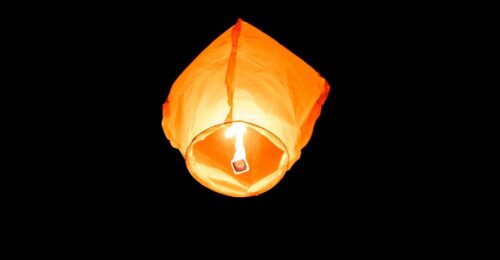Financial Literacy: Where to Start
Financial literacy is an important life skill that women can acquire to help ensure and safeguard their financial well-being.
Swimming lesson
Having grown up in landlocked Indiana, I’ve never been a good swimmer or perhaps even a swimmer by some people’s definition. Additionally, my fear of deep water further discouraged me from improving. For much of my growing-up years, I was able to get by without developing this skill.
However, during the first week of college, I found out that all freshmen had to take a swimming test as the administration saw it as a critical “life skill.” Those who didn’t pass the test would have to take a beginner’s swimming class first semester. Overestimating my abilities, I showed up to the pool, got suited up, and then lined up to take the test. I soon learned that I had to do 5 laps from shallow to deep end and back and forth in order to pass. Standing there and looking at the length of the pool and dreading the deep end, I began to get nervous and then I got real. I can’t pass this test! So, I whispered to the proctor to sign me up for remedial swimming class. I then left dejected, but also relieved. The jig was up. Here was my chance to finally learn to swim!
For the next semester, I trudged through the rain, cold and sometimes snow every Monday and Wednesday to get to swimming class, which felt like the island of misfit toys as there were so few of us students. In class, I learned the freestyle, breaststroke, butterfly, backstroke and, most importantly, how to tread water. By the end of the semester, I wasn’t the best swimmer, but felt a lot more confident in my ability to survive and perhaps thrive in the water, including the deep end.
Financial literacy
I recount this story as it also reflects my trajectory from financial illiterate to financial planner. Due to a family tragedy, I felt forced to ramp up on personal finance as quickly as possible. I can still remember how foreign, complicated and intimidating the subject matter was when I encountered it 20-plus years ago. However, the more I learned and leveraged the information, the more I came to realize that financial literacy was also a critical life skill. Unfortunately, it was never taught when I was in school. This still may be the case today.
As an individual and financial planner, I’m disheartened to read about the low rate of financial literacy in the U.S., especially among women. Two-thirds of Americans can’t pass a basic financial literacy test1. Additionally, research has shown that women typically score lower than men on financial literacy tests2. This lack of knowledge adversely impacts women in their everyday lives:
60% of women cannot come up with emergency savings for something unexpected, versus 50% of men.3
While women’s educational and professional advancements have allowed them to close the labor gap with men, it has not enabled them to close the financial gap (particularly in pay and retirement savings). How then to close this gap given the fact that women are still paid less for doing the same work and living longer? I think it starts with education (or financial literacy). Carrie Schwab-Pomerantz, head of the Charles Schwab Foundation, succinctly draws the parallel between financial literacy and women’s well-being:
To me, financial literacy is foundational…It’s foundational in terms of our confidence, our security and our independence. It allows us to do the things that we want to do.
Where to begin?
Based on my experience talking with women, many want to learn more about personal finance, but don’t quite know where to start. Then, there are those prefer to avoid it altogether as the subject matter feels too foreign and daunting. To make matters worse, their (sometimes perceived) ignorance discourages them from speaking up and taking the critical first step towards literacy and greater security. As is the case, I’ve compiled a short reading list to help women who are interested in learning more about personal finance get started.
The Simple Path to Wealth: An alternative name for this book could be Personal Finance: The Cliff Notes. Author JL Collins spent decades reading, researching, and experimenting with different savings and investing strategies. He has distilled his hard-won knowledge and wisdom into this easy-to-read-and-understand book. Whether you’re 20- or 60-years-old, you will learn the essential lessons for building wealth.
The Millionaire Next Door: A by-product of years of academic research, this book demystifies the public (mis)perception of who among us are millionaires. More importantly, it decodes many of the shared habits that got them where they are. Want to be a millionaire? Look no further than your neighbors.
Your Money or Your Life: This seminal work illustrates the tradeoffs we make daily when we sacrifice our life for the sake of money (or stuff typically). Do you feel stressed out? Your “money-life equation” may be off-balanced. Fortunately, the authors share practical financial advice that can help you reclaim your life.
NOTE: If you have time to read just one book, I’d recommend The Simple Path to Wealth.
Sink or swim?
I realize that for many women, personal finance may feel like jumping into the deep end of the water when they don’t yet even know how to swim. With this in mind, I’ve tried to recommend books that can help you wade slowly into the subject matter. I hope you’ll discover how quickly you can acclimate to a different medium and that your body was designed to float. The path to wealth is simple. Taking the initiative and finding the discipline to keep going is hard. But, in so doing, you’ll discover what I did long ago as a naïve freshman: critical life skills can be learned and along with this greater confidence in yourself. For one day, the life you save will be your own. So, jump in!
Additional Resources:
1 “Nearly Two-Thirds of Americans Can’t Pass a Basic Test of Financial Literacy,” Fortune, July 2016.
2 “In Our Best Interest: Women, Financial Literacy, and Credit Card Behavior,” Scholar Commons, university of Southern Florida, 2013
3 “As More Women Become Leaders, Financial Literacy Is a Key Ingredient,” University of Pennsylvania, 2017
Recent Posts
- My thoughts on markets and money – Balance March 26, 2025
- Year-end reflections on gifting December 20, 2024
- August Market Dip – Dress Rehearsal? October 25, 2024
- Summer Reading: 3 Books I Recommend July 12, 2024
- My thoughts on markets and money: Risks and returns May 2, 2024
RECENT POSTS
March 2025
Although 2024 double-digit stock market return suggests a strong US economy, the recent change in government leadership and policies highlights the underlying risk (uncertainty) that now weighs down the market and tests American exceptionalism.
December 2024
The fifth anniversary of my advisory firm and the holiday season have prompted me to reflect on my Life’s journey so far and, in so doing, unexpectedly arrive at an unconventional perspective on gifting.
October 2024
August steep market decline serves as a useful dress rehearsal for how we might react in a bear market and what we should do now to increase survival.
Get a free financial education.
Learn more about key financial topics, such as investing, 401k, disability insurance, paying for a home, at your own convenience. Sign up for Women’s Wealth monthly newsletter and have relevant information delivered to your inbox.

Live life on your own terms.
Do you find yourself constantly stressed or bored at work and wondering when you can live life on your own terms? Learn how to harness money’s energy and begin to create your life rather than just manage it.
CONNECT
Anh Thu Tran
Women’s Wealth LLC
P.O. Box 1522
Tacoma, WA 98401
anhthu@womenswealthllc.com
(206) 499-1330
Women’s Wealth LLC is a Washington State registered investment advisor. The presence of this website on the Internet shall not be directly or indirectly interpreted as a solicitation of investment advisory services to persons of another jurisdiction unless otherwise permitted by statute. Follow-up or individualized responses to consumers in a particular state by our firm in the rendering of personalized investment advice for compensation shall not be made without our first complying with jurisdiction requirements or pursuant an applicable state exemption. For information concerning the status or disciplinary history of a broker-dealer, investment advisor, or their representatives, a consumer should contact their state securities administrator.
© 2021 Women’s Wealth LLC. All rights reserved. | Design by Erin Morton Creative, LLC.



